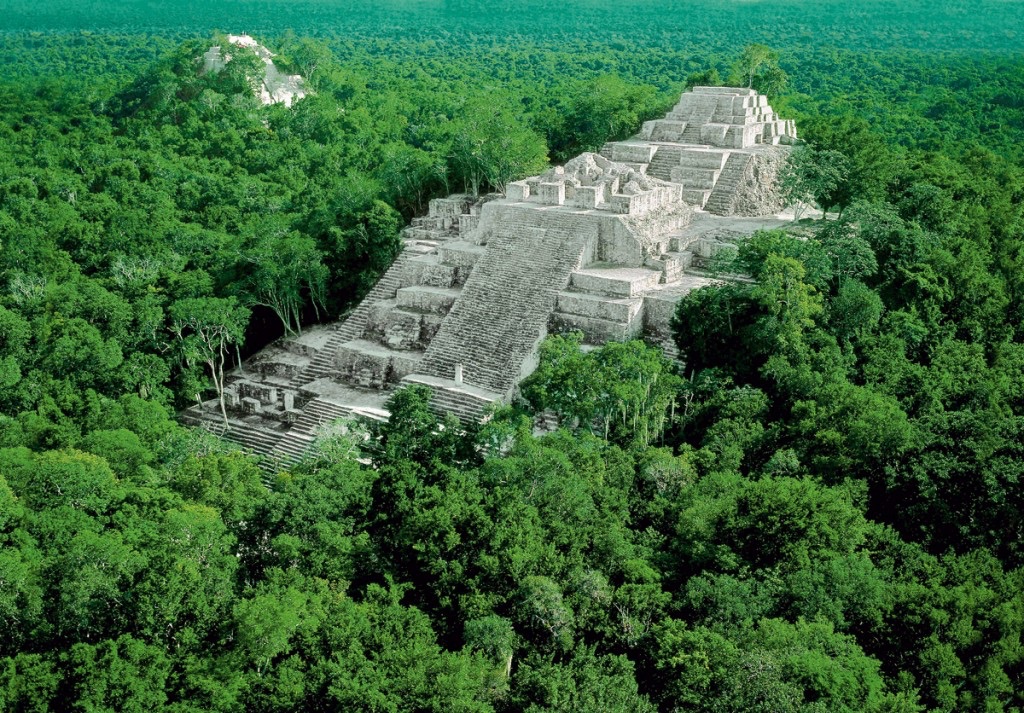El Mirador is a pre-Columbian Mayan settlement located in the dense rainforest of the Petén region of Guatemala. It flourished during the Preclassic period, around 600 BCE to 100 CE, and is renowned for its massive pyramids and complex urban designs. The site was a bustling metropolis and one of the most significant cultural centers of the Maya civilization. It was rediscovered in 1926 by archaeologists who were amazed by its grandeur and scale, which includes the largest known pyramid in Central America, La Danta. El Mirador’s extensive causeways and sophisticated water management systems reflect the advanced urban planning of the ancient Maya. Despite its historical significance, the site remains less explored than other Mayan ruins, partly due to its remote location.
Get your dose of History via Email
Historical Background of El Mirador
El Mirador, nestled in the heart of the Guatemalan jungle, was first stumbled upon in 1926 by a team of archaeologists. It was Ian Graham who later mapped the site extensively in the 1960s. The ancient Maya built this city, which thrived from the 6th century BCE until the late 1st century CE. It was then abandoned for reasons still debated among scholars. The city was a hub of activity and innovation, as evidenced by its architectural feats.
El Mirador’s inhabitants later left behind a city that would sleep under the forest canopy for centuries. The site was not the scene of any known historical events after its decline. However, it was a cradle of Mayan civilization during its peak. The city’s design and construction techniques were ahead of their time, influencing later Mayan sites.
Researchers believe that El Mirador’s decline was gradual. It was possibly linked to environmental factors and resource depletion. The city’s rediscovery in the 20th century opened a window into Preclassic Mayan society. It has since become a focal point for understanding the rise and fall of early Mayan urban centers.
El Mirador’s significance lies not just in its monumental architecture but also in its role as a cultural and economic powerhouse. It was a city that likely held sway over a vast region. Its influence is evident in the spread of architectural styles and urban planning concepts throughout the Maya lowlands.
Today, El Mirador is a testament to the ingenuity of the Maya. It serves as a crucial piece in the puzzle of Mesoamerican history. The site continues to be a subject of research, with new discoveries shedding light on its complex past.
About El Mirador
El Mirador was a marvel of engineering and architecture. The city’s builders used limestone to construct towering pyramids and sprawling plazas. The most famous structure, La Danta, stands as one of the largest pyramids by volume in the world. Its base covers more than 2.8 million cubic meters.
The city’s layout was intricate and purposeful, with large triadic complexes dominating the urban landscape. These complexes featured a central pyramid flanked by smaller structures. They were likely focal points for religious and administrative activities.
El Mirador’s architects also constructed an extensive network of causeways. These were raised pathways that connected different parts of the city and other Mayan centers. These causeways facilitated trade and communication across the otherwise impassable rainforest terrain.
Water management was another area where El Mirador’s inhabitants excelled. They built reservoirs and water collection systems to sustain the city during dry periods. This innovation highlights the Maya’s deep understanding of their environment and their ability to adapt to it.
The city’s decline did not diminish its architectural achievements. The structures at El Mirador remain a source of awe and inspiration. They continue to attract archaeologists and historians eager to uncover the secrets of Mayan ingenuity.
Theories and Interpretations
El Mirador has been a hotbed of theories and interpretations since its rediscovery. Scholars have proposed various uses for the site, from a religious center to an administrative hub. The sheer size of the city suggests it played a significant role in Mayan society.
Some mysteries of El Mirador include the purpose of the massive triadic complexes. Researchers speculate they were ceremonial platforms for elite activities. Yet, the exact nature of the rituals remains a topic of debate.
Matching El Mirador to historical records is challenging due to the scarcity of written texts from the Preclassic period. However, the site’s alignment and iconography provide clues to its cosmological significance for the Maya.
Dating El Mirador has involved methods like radiocarbon dating and analysis of ceramic styles. These techniques have helped establish the timeline of the city’s occupation and its peak.
Theories about El Mirador continue to evolve as new evidence emerges. Each discovery adds a piece to the puzzle of this ancient city’s history and its role in the broader Mayan civilization.
At a glance
Country: Guatemala
Civilization: Maya
Age: Preclassic period, approximately 600 BCE to 100 CE
Conclusion and Sources
Reputable sources used in the creation of this article include:
- Wikipedia: https://en.wikipedia.org/wiki/El_Mirador

